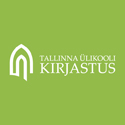Etno- ja toponüüme murdekeelest: saksa ja saksamaa eesti loodussõnavaras [Dialectal ethnonyms and toponyms: saksa and saksamaa in Estonian nature vocabulary]
Abstract
This article concentrates on Estonian dialectal denotations for plant, animal and bird species that arrived in Estonia a long time ago and which contain the att ribute saksa “German” or saksamaa “of Germany” as an indication of the then believed country of origin. The examples come from the dialectal archive of the Institute of the Estonian Language and they express the language usage of Estonian country folk between 1840 and 1940. Dialect speakers seem to have been convinced that such ornamental trees as the larch (saksamaa kuusk), silver willow (saksa paju), silver aspen (saksamaa haab), silver poplar (saksamaa pappel) and chestnut (saksamaa saar) arrived in Estonia via Germany. These were the most common and wellknown tree names. According to dialectal evidence, these trees grow mostly in western and northern Estonia since the climate there is maritime. As for animals, examples can mostly be found of merino sheep (saksamaa lammas). The most noteworthy bird is the European roller (saksamaa vares), a rare migratory bird in the 19th century. However, in the Estonian context, the word saksa referred not only to Germany, as there were many Baltic Germans living in Estonian towns and manors. They were known as the linnasaks or mõisasaks, where saks was a general marker of social status. It identifi ed them as belonging to the upper class, and did not indicate their nationality. Furthermore, the dialectal archive off ers us many examples of the usage of the att ribute saksa or saksamaa as a qualifying adjective linked to the lifestyle of people of higher ranking (e.g. saksa mood, riie and roog). The designations found in the dialectal archive are contrasted with those presented in J. F. Wiedemann’s Estonian-German dictionary (1869/1893), since the dictionary was used as a basis for collecting dialectal vocabulary. As parts of it come from older lexicons, the results have also been compared to the 17th century masterpiece H. Göseken’s German-Estonian dictionary (1660). 218 Contrasting linguistic materials shows clearly and accurately how Estonian society used to be German-oriented. Despite the existence of (toponym) examples of other nations and countries, saksa and saksamaa are so wide-spread that it is clear that most of the economic and cultural contacts occurred in/via Germany. It seems that, in a symbolic way, to Estonians Germany represented, if not the Europe of those days, at least the centre of Europe.
Keywords
Estonian dialects, ethnonyms, ethnobotany, lexicography, Estonian
Full Text:
PDFRefbacks
- There are currently no refbacks.
Published by / Kirjastaja:

ISSN 2504-6616 (print/trükis)
ISSN 2504-6624 (online/võrguväljaanne)
